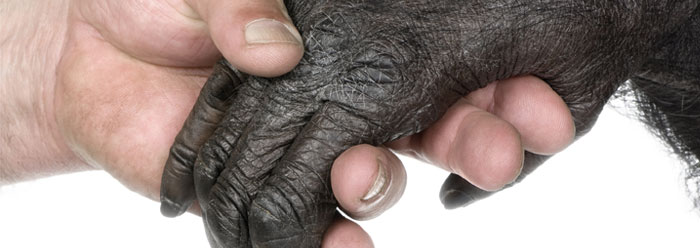When we think about our place in the animal kingdom, it’s easy to imagine ourselves as distinct and separate from the rest of nature. However, a closer look at our physical characteristics reveals something truly fascinating: our incredible similarity to our primate relatives. Let’s explore the striking resemblance between human and chimpanzee fingers and what it tells us about our connection to the natural world.
The Remarkable Resemblance
At first glance, a chimpanzee’s finger and a human finger might seem remarkably similar. This is no coincidence. Chimpanzees and humans share a common ancestry and have evolved along parallel paths, resulting in striking similarities in our anatomy.
Despite the differences in size and certain functional adaptations, the structure of a chimpanzee’s finger is almost identical to that of a human’s. Both have similar bone structures, joints, and even fingerprints. This similarity underscores our shared evolutionary history and highlights how closely we are related to these remarkable creatures.

A Shared Ancestry
It’s important to recognize that we do not come from primates; rather, we are primates. Humans and chimpanzees are both part of the primate family, sharing a common ancestor that lived millions of years ago. This connection is evident in our genetic makeup and physical characteristics, such as the structure of our fingers.
This genetic kinship reflects our place within the animal kingdom and reminds us that we are not so different from the creatures with whom we share our planet. We are mammals, a category that includes a diverse range of species, all of which are products of nature’s complex and beautiful process of evolution.

Understanding Our Place in Nature
Recognizing our similarities with chimpanzees and other primates helps us appreciate our role in the natural world. It’s a powerful reminder that we are not separate from nature but an integral part of it. Our shared traits highlight our connection to the broader web of life and emphasize that we are part of a larger, interconnected system.
Here’s why this matters:
- Shared Evolutionary History: Understanding our similarities with other primates sheds light on our evolutionary journey and the deep connections we share with other species.
- Nature’s Complexity: Recognizing our place within the natural world helps us appreciate the complexity and beauty of evolution and biodiversity.
- Conservation and Respect: Acknowledging our kinship with primates reinforces the importance of respecting and conserving wildlife and their habitats.
Embracing Our Connection
Our shared anatomical features with chimpanzees and other primates remind us of the common threads that bind all life forms. It encourages us to view ourselves not as separate from nature but as an integral part of it. By embracing this connection, we can foster a greater appreciation for the natural world and work towards preserving the diverse forms of life with which we share our planet.

Join the Conversation
What are your thoughts on the similarities between humans and primates? How does understanding our shared heritage impact your view of nature and conservation? Share your reflections in the comments below!




